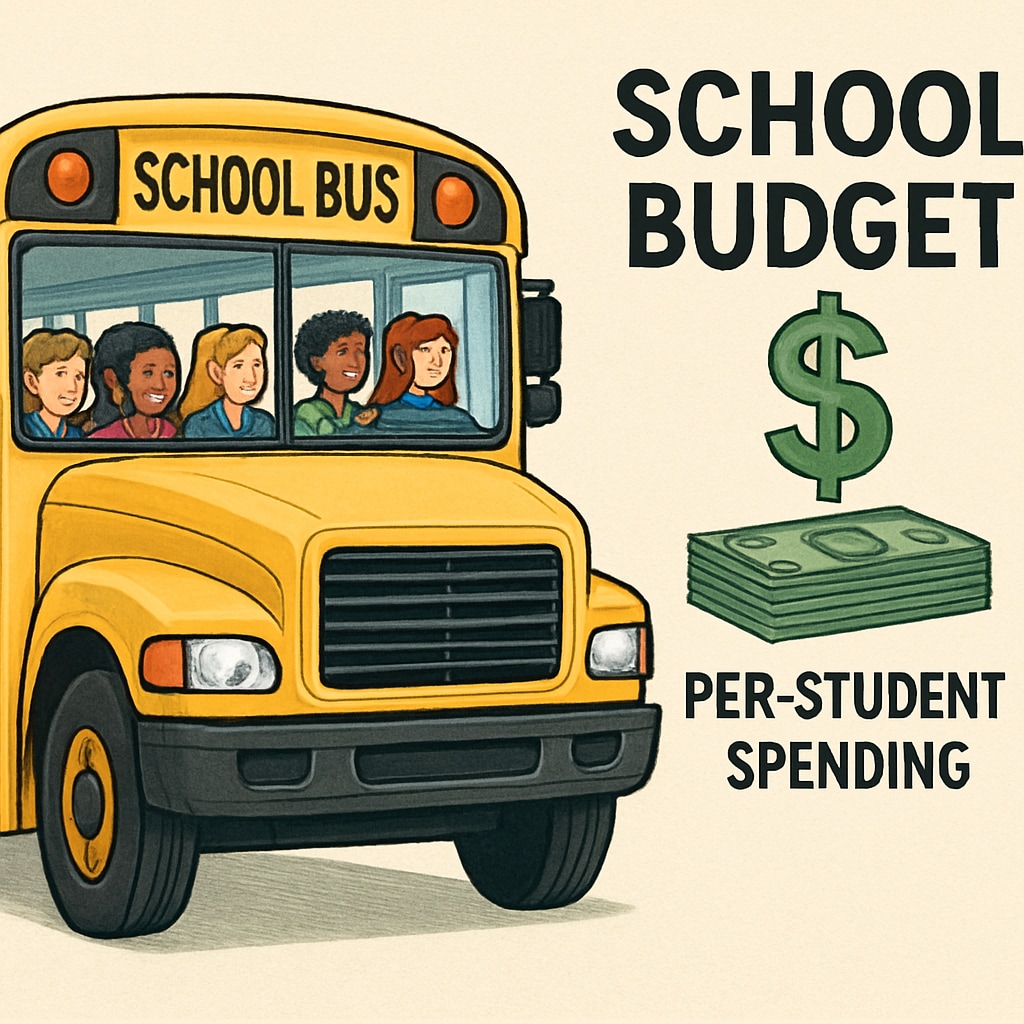School budgets often revolve around a critical metric: per-student spending. This metric, calculated by dividing total school funding by the number of enrolled students, aims to highlight the resources allocated for each learner. However, this seemingly straightforward calculation can be misleading due to inflated costs from “through funding” mechanisms like transportation services. These distortions raise critical questions about the fairness and effectiveness of current school budget allocation systems.
How “Through Funding” Distorts Per-Student Spending Metrics
One major source of inflation in per-student spending is “through funding,” where funds are allocated indirectly for services such as transportation or administrative overhead. For example, a school district may invest heavily in bus services to accommodate students from remote areas. While these expenses are necessary, they rarely contribute directly to classroom learning. Instead, they inflate the per-student spending metric, creating the illusion of more robust investment in education.

Transportation costs are particularly problematic. According to studies, some districts spend up to 10% of their budget on bus services alone. These costs disproportionately affect rural and suburban areas, where longer distances demand more extensive transportation networks. Although transportation is vital for student access, it can siphon funds away from instructional materials, technology, and teacher salaries, which have a more direct impact on educational outcomes.
The Hidden Costs of Misallocated Budgets
Beyond transportation, other through funding categories such as facility maintenance and extracurricular programs can also skew per-student spending data. For instance, building renovations or sports facilities may significantly inflate a district’s budget without necessarily improving academic performance. While these investments are important for overall school operations, they should not overshadow the need for equitable classroom resources.

Additionally, inflated per-student spending can obscure disparities between districts. Wealthier districts often report higher spending due to their ability to fund both educational and non-educational expenses. This creates an unfair comparison with underfunded schools, where budgets are stretched thin to cover even basic necessities. As a result, the per-student spending metric fails to accurately reflect the quality of education provided.
Rethinking Budget Allocation for Fairer Metrics
To address these distortions, policymakers must rethink how school budgets are allocated and measured. One potential solution is to separate funding categories more clearly, distinguishing direct educational expenses from operational costs. This would allow stakeholders to evaluate how much money is truly being spent on improving student learning.
For example, introducing a “classroom spending ratio” that focuses solely on instructional expenses—such as teacher salaries, textbooks, and technology—could provide a more accurate reflection of a district’s commitment to education. This metric would complement the existing per-student spending data, offering a holistic view of resource allocation.
In addition, equitable funding models should be prioritized. States and districts could adopt need-based formulas that allocate more resources to underprivileged schools, ensuring that every student has access to quality education regardless of geographic or socioeconomic factors. For further reading on equitable funding, visit Equity in Education on Britannica.
Conclusion: A Call for Transparency and Equity
While per-student spending is a valuable metric, its interpretation must be approached with caution. Through funding mechanisms like transportation services and facility upgrades often inflate this figure, masking disparities in resource allocation and overshadowing direct investments in education. By adopting clearer, more equitable budget allocation methods, policymakers can ensure that funding serves its intended purpose: enhancing the quality of education for every student.
Ultimately, transparency in reporting and fairness in funding distribution are essential for creating a more accurate and meaningful picture of school budgets. For a deeper dive into the implications of school funding, visit Education Funding on Wikipedia.
Readability guidance: This article uses short paragraphs, clear transitions, and accessible language to enhance readability. Bullet points and lists were avoided to maintain a professional tone, but headings and subheadings offer clear structure for easy navigation.


